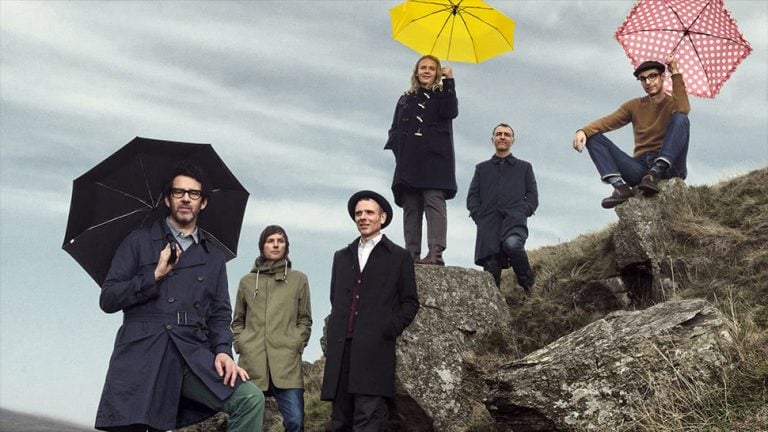If you’ve been remotely online in the past few weeks, you’ll have heard that twee is back. Get Z, by way of TikTok, rediscovered it and made it go viral.
Yes, that means the return of Zooey Deschanel, Moonrise Kingdom, and – shudder – Tumblr. Even Vogue covered the twee revival, which probably confirms that it’s truly back.
What’s probably less known, however, is that there’s an entire musical genre based around the aesthetic. Twee pop started as a subgenre of indie pop in the 80s and, as often happens with subgenres, some have had difficulty distinguishing between twee pop and indie pop.
The differences do exist and they are key. Twee pop mainly stemmed from NME’s seminal C86 compilation of indie pop artists, but twee pop bands weren’t as jangly or loose, and their sound favoured simplicity and earnestness.
Many of the songs were concerned with love, often unrequited, but it never wallowed in sadness. The songs were childlike and innocent, but didn’t feel lesser for it. Catchy melodies dominated the pleasant and pure sound as twee pop became a refuge for the sensitive art school types.
The twee pop movement soon developed around labels like Sarah Records, K Records, and Slumberland Records. Olympia and Seattle in Washington State, Glasgow, London, and Melbourne became foundational cities for the genre.
The genre’s roots can probably be traced further back to The Smiths – most indie pop was influenced in one way or another by Johnny Marr and Morrissey – but it was also arguably a response to more overtly machismo rock. The heyday of twee pop came in the early 90s, just after the brash hair metal scene of the late 80s.
Love Indie?
Get the latest Indie news, features, updates and giveaways straight to your inbox Learn more
It was then followed, particularly in the U.K., by the bulldozing britpop, before Coldplay and Travis then turned sensitivity into a mawkish commercial endeavour in the early 00s.
Similar to “emo”, “twee” was often used as an insulting term in music circles. But when it was done right, twee pop managed to avoid being too saccharine and kooky, instead just possessing tender melodies and earnest charm. And it may annoy the grunge crowd but Kurt Cobain, at his essence, was a twee kid: his favourite artists included Daniel Johnston, The Vaselines, and Marine Girls.
To mark the resurgence of twee in culture right now, we thought we’d give you a guide to twee pop through the music of seven seminal bands in the genre, including an iconic Melbourne group.
For more on this topic, follow the Indie Observer.
Beat Happening
Perhaps the greatest proponent of twee pop. Formed in Olympia, Washington (a twee pop hub) in 1982 by Calvin Johnson, Heather Lewis, and Bret Lunsford, the band are also a landmark in lo-fi music. The trio made ramshackle and raw songs, all of them infused with a wondrous sense of whimsy. Nothing here is technical; it somehow sounds better for it. Johnson’s booming baritone and Lewis’s ponderous vocals were the perfect foils for each other as they sung about things both meaningful and nonsensical. Johnson also founded the seminal K Records, a hotbed for lo-fi and twee pop artists.

Tiger Trap
High school friends Angela Loy, Rose Melberg, Heather Dunn, and Jen Braun, the foursome only released one titular album on K Records but that was enough to secure their future influence. Beat Happening named a song after them, while Melberg became a twee pop icon for her roles in other bands in the genre like Gaze and The Softies. Tiger Trap’s only album is a delightful collection of fast-paced pop, big on heart. It was a taste of the forthcoming riot grrrl movement but with added sweetness.

Belle & Sebastian
Glasgow has a proud indie pop tradition and Belle & Sebastian are arguably the greatest exporters of the form from Scotland’s music capital. Where artists like The Pastels were knowingly hip, Belle & Sebastian added a tweeness consisting of sincerity and artsy intellectualism. And in Stuart Murdoch, they have one of the finest songwriters of the last 30 years: he spins profound tales of the lost and lonesome like few others. The band have moved into other genres in recent times but their three-album run of twee pop in the 90s – Tigermilk, If You’re Feeling Sinister, and The Boy with the Arab Strap – was a trio of masterpieces.

The Field Mice
A Sarah Records artist, the London group might have tried their hand at a number of genres, including dance and punk, but it was all delivered with a sincere wide-eyed naivety. “If you need someone / To hold you / When you are afraid / I’ll hold you,” they sing in their popular song ‘If You Need Someone’, which is about as twee as it comes. The Field Mice possessed the earnestness of The Smiths while avoiding the grating indulgence of Morrissey.

Shop Assistants
Hailing from another Scottish city, Edinburgh, the Shop Assistants were only around for a few years in the 80s. Their soft tones and unpretentious songwriting won them an army of fans, though, including Morrissey. Alex Taylor had a lovely lead vocal, full of breathless charm and wistful energy. BBC Radio 1’s Janice Long and John Peel both adored the group, which is enough of an endorsement.

Tullycraft
Seattle’s Tullycraft were the only twee pop band to play the genre with a wry nod and wink. “Well she wakes up every morning / To the sound of Sarah Records / On a compilation tape,” lead singer Sean Tollefson sings in the simply-named ‘Twee’; other songs come with titles like ‘Pop Songs Your New Boyfriend’s Too Stupid To Know About’ and ‘The Punks Are Writing Love Songs’. And that’s essentially what Tullycraft did: they were frenetic DIY punks who made cute twee pop with a knowing wit.

The Lucksmiths




































